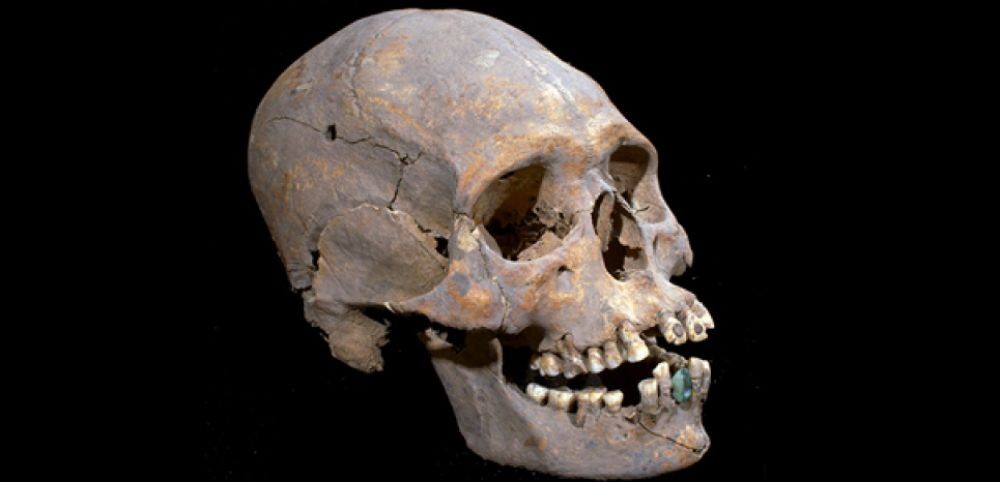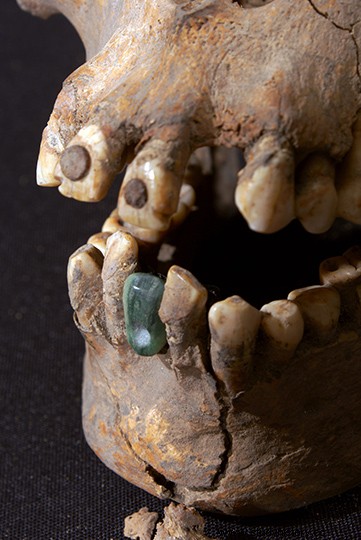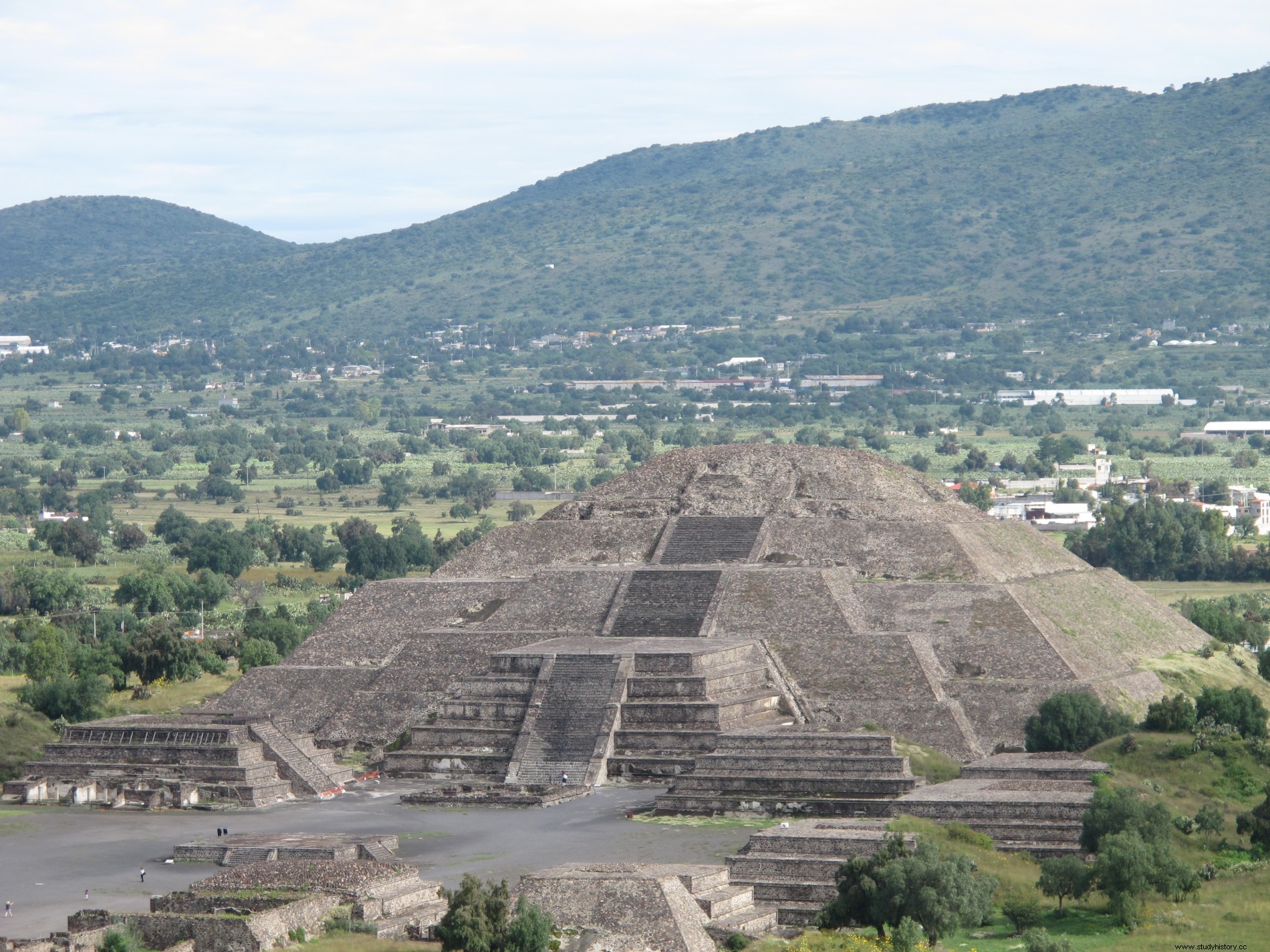 Skull of a woman who lived 1600 years ago, discovered in the "foreign communities" district of the city of Teotihuacan (Mexico), showing dental encrustations.
Skull of a woman who lived 1600 years ago, discovered in the "foreign communities" district of the city of Teotihuacan (Mexico), showing dental encrustations. Teotihuacan, the cosmopolitan… The examination of the remains of a woman living 1600 years ago in this pre-Hispanic city*, then the largest metropolis of the New World (today in Mexico), revealed practices borrowed from southern cultures:a deformed skull and teeth set with polished gemstones. According to Jorge Archer Velasco, one of the archaeologists from the National Institute of Anthropology and History (INAH) involved in this study presented in July 2016, the skull of the "Lady of Tlailotlacan", - from the name of the place where she been released -, has "been elongated by very strong compression" , an artificial deformation technique unknown to Teotihuacan but common in the Maya area of southeastern Mexico and Central America. The burial, exhumed in 2014, was also at the western end of the ancient "city of the gods" (its Nahuatl name ), in the former sector of "Tlailotlacan", that of "people from distant lands" .
A green jadeite stone prosthesis in place of a lower tooth
"The archaeological excavations undertaken in 2008 in Teotihuacan have made it possible to study the processes of integration of foreign populations. They are the manifestation of the cosmopolitan character of this city which had to accommodate populations of various origins, such as finds from prestigious burials, such as the Lady of Tlailotlacan" , adds Veronica Ortega, at the origin of the project. Teotihuacan has in fact constituted a great center of attraction for different communities attracted by the economic development of the city, its exchange of goods and the construction of its great sanctuaries.
 Detail of iron pyrite and jadeite dental encrustations Credit:INAH/Aldo Diaz Avelar
Detail of iron pyrite and jadeite dental encrustations Credit:INAH/Aldo Diaz Avelar
The presence of round iron pyrite stones embedded in the upper teeth, as well as a green jadeite stone prosthesis in place of a lower tooth, are indeed the characteristic evidence of the foreign origin of this woman. Among certain Mesoamerican peoples, like the ancient Mayas of the Petén region and Belize, the teeth could indeed be decorated with jade, turquoise, serpentine, or hematite. To perforate the vestibular surface of the teeth and dig the small cylindrical cavities there intended to receive these ornaments, the "dentists" of the time used a hard stone, obsidian, and powdered quartz as an abrasive. The stone was then attached to the tooth using natural resins. According to the research carried out on these practices, the teeth were drilled without the pulp being touched...
Teotihuacan was the largest urban center in Mesoamerica
For Stephen Houston, professor of archeology at Brown University, in Providence in the State of Rhodes-Island (United States), these dental ornaments were intended to purify the breath and allow the expression of elegant words. With the mouth displaying social status, the reshaped teeth were always arranged on the visible parts of the jaw. The stones would have had magical virtues and were believed to provide divine protection to the individual. Other types of dental mutilation were also practiced, including the filing of pointed teeth or the lacquering and dyeing done with bitumen or cochineal extracts. These practices would have disappeared shortly after the arrival of the Spaniards in the 16th century.
The analysis of the incrustation stones should be carried out soon, to try to know their provenance.
 Teotihuacan, the Pyramid of the Moon at the end of the Avenue of the Dead. Credit:Bernadette Arnaud
Teotihuacan, the Pyramid of the Moon at the end of the Avenue of the Dead. Credit:Bernadette Arnaud
Populated by more than 100,000 souls, between 200 and 700 AD, Teotihuacan was the largest urban center in Mesoamerica. Occupied since 600 BC, its architectural plan squared around the Alley of the Dead, a long central avenue 2 km long, was dominated to the north by the Pyramid of the Moon, followed halfway by a pyramid still more imposing, that of the Sun. To the south, the Citadel, enclosed the Temple of the Feathered Serpent, Quetzalcóatl. Around, large areas of habitats may have served as the main residence of the dignitaries of the city. Teotihuacan is still very poorly known, and its end, around 700 AD, seems to have been dramatic. His mysterious abandonment has still not been elucidated.
